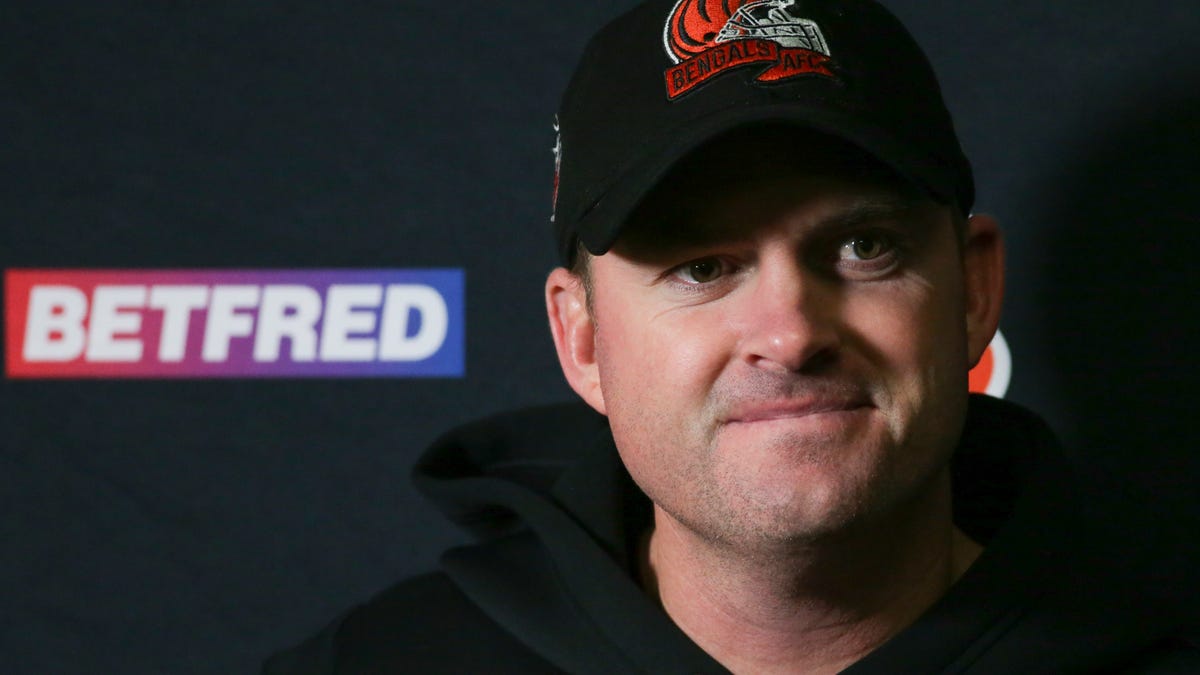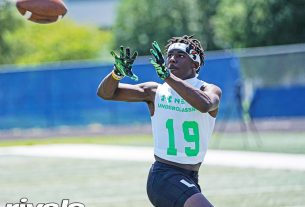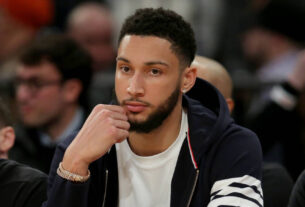|
Getting your Trinity Audio player ready...
|
Determining an NFL head coach’s value is difficult as hell. Sometimes it’s easy, like with the Jacksonville Jaguars and Urban Meyer, or the New York Giants and Brian Daboll. But most of the time, figuring out how much of a team’s success is based more on the coach or the talent on their roster is an impossible task. There isn’t any one statistic fans can look at to determine a coach’s greatness. Oftentimes, the argument starts and ends with postseason success — if a coach can consistently go on deep postseason runs, he is a good coach — and if that’s the case, then by all means, Cincinnati Bengals head coach Zac Taylor is great.
However, despite leading his team to the AFC Championship game in two consecutive seasons, including one — possibly two — trips to the Super Bowl, the jury still seems to be out on Taylor. Is he being carried by elite talent, or does he elevate his squad to Super Bowl-caliber play? Does it even matter?
Postseason success
As I said earlier, postseason success tends to be the end-all-be-all for determining a coach’s value. Quickly, how many great coaches can you name who never went on a deep postseason run? None? Shocking. On the contrary, how many bad head coaches can you think of who went on multiple deep postseason runs? None. Wow, didn’t see that coming. This argument is weak though. In essence, it’s a loaded question. If the basis of this argument is postseason success, then it is literally impossible to answer either question.
Even if you were to point out that Don Coryell went 111-83-1 as a head coach — an astounding record — but never reached the Super Bowl, I could simply say “Yeah, because he was a bad coach.” Even if you pointed out that most people believed Mike McCarthy was bringing down the Green Bay Packers at the end of his tenure with the team, but did win a Super Bowl and go on multiple deep postseason runs, I could counter with “Yeah, but he won a Super Bowl and bad head coaches don’t win Super Bowls.” By labeling postseason success as the best and/or only way to determine a coach’s value, we are putting head coaches in a box for checking or not checking metaphorical boxes. That’s not right.
Mid-game adjustments, system in place
A more appropriate basis for this argument would be figuring out how often their team is well-prepared, adjusts mid-game, and how their system elevates their players. Take Brian Daboll for example. In his first year as head coach of the New York Giants, Daniel Jones went from a turnover-prone, clumsy quarterback into a legitimate weapon despite having zero weapons to throw to. I mean, for goodness sake, Jones literally had the lowest interception rate in the league. That’s a textbook example of elevating your players. Can the same be said about Zac Taylor? Eh, maybe.
G/O Media may get a commission

Addiction counseling
Safe Haven Health
Accessible for all
Safe Haven prioritizes your needs with flexible and individuated substance abuse treatment, specifically opioid & alcohol addiction.
Despite Ja’Marr Chase being one of the most electric players in the NFL with the ball in his hands — I mean, one of his greatest tools is his speed after all — he rarely gets many yards after the catch. Chase ranked 28th in YAC/reception in 2022 among wide receivers and tight ends with at least 50 targets, behind the likes of Tyler Higbee, Gerald Everett, Randall Cobb, and Mike Williams. None of these players’ biggest strengths is running with the ball, but their coaches have found ways to scheme them open with room to run.
In the same vein, despite Chase’s incredible speed and release off the line of scrimmage, he is almost always near the bottom of the league in separation yardage. In 2022, among receivers with at least 45 targets, Chase ranked 23rd-to-last in separation yards per reception (2.6), only slightly ahead of fellow Bengals’ wideout Tee Higgins (2.5 — 19th-to-last; although that’s more acceptable and I’ll explain why in a minute). The Bengals’ offense far too often relies on perfectly executed go-routes and the connection between Chase and Burrow. I’m not saying that’s a bad thing, but it’s arguably not playing to Chase’s strengths. You’d expect him to be schemed open in the same way Deebo Samuel and Cooper Kupp are. That said, Chase still puts up monster numbers every week, but I can’t help but wonder if those could be even better. Also, it’s hard to determine how much of this passing attack comes from Taylor versus offensive coordinator Brian Callahan.
At the same time, there’s Tee Higgins. Higgins is 6-foot-4, 215 pounds. He’s also pretty good at tracking the ball into his hands. He’s not the fastest but he’s built for jump balls and contested catches in one-on-one coverage down the sidelines. He should be a serious deep threat despite his lack of speed. Taylor plays into those strengths well, targeting Higgins an average of 11.3 yards downfield — the highest on the team. Despite getting far fewer looks than his fellow wideout Chase, Higgins gets nearly the same number of total air yards, commanding 28.88 percent of the team’s targeted air yards for the entire season, compared to 30.01 percent for Chase. Chase had 134 targets this season. Higgins had only 109.
Essentially, while he’s not perfect at making the most of his players, Taylor has proven himself capable of doing so, and even in the cases where he’s not…the team is doing just fine on offense. Don’t fix what ain’t broke, right?
So, how well does Taylor make adjustments mid-game? Well, that’s much easier to diagnose. Let’s just look at the Bengals’ first and second-half splits in 2022. Let’s see…so, in the second half of game’s this year, the Bengals were better at:
Completion Percentage: 68.5 percent in the first half/68.9 percent in the second half
Interception Rate: 2.08 percent/1.85 percent
First Down Rate: 35.31 percent/37.78 percent
Touchdown Rate: 5.34 percent/6.67 percent
Yes, they were far worse rushing the ball, but the Bengals were also winning in most of their games in the second half. Most of the time, they were trying to run the clock down. When the defense is expecting runs in those circumstances, the rushing numbers are obviously going to be worse. On defense, the team improved in the second half in:
Yards per rush allowed: 4.7 yards per rush/3.7 yards per rush
Rushing first down percentage: 27.52 first down percentage/22.4 percent
Completion percentage allowed: 60.8 percent/57.1 percent
Pass yards per attempt allowed: 7.0 yards per pass attempt/6.7 yards per pass attempt
Passing TD percentage: 3.8 TD percentage/2.42 percent
I know Taylor doesn’t have a defensive background, so maybe it’s unfair to give him credit for the defense’s success, but either way, the Bengals were an objectively better team in the second half of games this year. While the mentality of the players in the locker room can have an effect on such splits, the coaching staff also plays an enormous factor, and I don’t think the value that comes from mid-game adjustments can be overstated. Also, 2022 wasn’t a fluke. The Bengals were arguably even better in 2021 in the second half than they were this year.
Preparation
Finally, we get to preparation. I’ll keep this angle short and sweet. Buffalo Bills head coach Sean McDermott is considered a great head coach. He was gifted a home game (which he frankly didn’t deserve; the game should’ve been held at a neutral site) against Cincinnati with weather conditions that you’d expect the Bills to be more accustomed to. McDermott was totally unprepared for what the Bengals cooked up. Taylor came into that game ready to decimate the Bills’ chances, ready to destroy the city’s hopes of a championship. He beat the Bills so badly that rumors and videos started popping up showing Bills’ star wideout Stefon Diggs unhappy with his quarterback and the team in general. Josh Allen fell on nearly everyone’s quarterback power rankings. How can he be better than the guy who just dominated him? That’s how well-prepared Taylor was for the Divisional Round. In their most important game of the season thus far, Taylor outcoached Sean McDermott at every turn. That’s all I should need to say.
The Cincinnati Bengals’ postseason success isn’t what makes him a great coach. The postseason is a fickle mistress that loves to create upsets and cursed fanbases. Anybody can win on any given day and some coaches just happen to be a little less lucky than others. What’s made Taylor great is his ability to prepare for his opponents and adjust accordingly. Is he perfect? No. His play-calling style may be a little too conservative, and he’s made some questionable decisions at times, but who hasn’t? Sure, his team’s record was atrocious without Burrow, but so was every head coach in history who was forced to run an offense with subpar quarterback play. It wasn’t until Patrick Mahomes came along that Andy Reid got over the hump and won a Super Bowl. Why is Reid immune from those same criticisms?
I came into this article fully prepared to burst Taylor’s bubble and give all the credit to the players, but what I found was a head coach who has improved his record every year he’s been at the helm and routinely prepares better for games than his opposition. He’s a good leader, no two ways about it.


